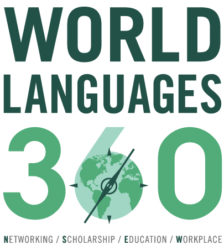(click the title above to expand and submit your own comment)
In the first part of this 2-part article, the focus was decidedly on employees and the skills that they bring to the workplace. As a reminder, a Google survey of its employees and their perceptions produced results that were somewhat surprising, with technical skills ranking well below those we arguably attribute in spades to bilinguals and polyglots. There are 7 such “soft skills” and attributes that topped the list. Take a look here.
Thinking about an important subset of employees, one whose ranks many employees wish to join, it may prove a useful exercise to highlight some of the attributes and perspectives of managers and leaders, and then to engage in a similar side-by-side comparison of those with our handy research summary from the American Council on the Teaching of Foreign Languages (ACTFL), as discussed in Part 1.
Before addressing that directly, it is important to differentiate between “managing” and “leading.” There are numerous articles ranging from opinion pieces to bona fide, published, peer-reviewed academic research on the matter, but for the purposes of a useful framework, take a look at this article in INC. online. The author, James Kerr, proposes 10 distinctions between the perspectives and even skill sets required by leadership and management, in an organization. Ideally, the optimal employee in a leadership role possesses the ability to do both items in each numbered, contrasting set.
Back to Google, then: What about management skills and traits? What else did Google discover? While the results are hardly surprising, they reiterate outlooks and perspectives that manifest caring and connections among people first and foremost.
In sum, the “soft” skills that we associate with effective leaders and effective managers, correlate well with successful language learners. Empathy, listening for cultural perspective as well as factual content, and negotiation of meaning all characterize successful target language interactions. Want proof? Look at some of the exemplars in the NCSSFL-ACTFL Can-Do Statements. While these are not meant to be a checklist of assessment criteria, taken as a whole, they provide a window into what our profession values as high performance among language learners. Arguably, these are an exquisite window into the underlying empathy and “soft skills” that appear in Google’s Oxygen Project discussed above. Some examples that illustrate not only linguistic competency, but also give a window into valuable leadership qualities include:
“I can interact and negotiate to resolve highly abstract and complex matters in culturally appropriate ways on a wide variety of topics and to persuasively advocate a point of view that is not necessarily my own.” (Interpersonal Communication, Distinguished)
“In my own and other cultures I can analyze how practices within informal and formal situations are related to perspectives.” (Intercultural Communication, Superior)
“I can tailor language to a variety of audiences by adapting my speech and register in culturally authentic ways.” (Interpersonal Communication, Distinguished)
The list goes on, and the parallels are there for the drawing. So, what do you think? Are there other explicit and implicit values that our profession infuses and imbues into World Languages teaching and learning that easily translate into success in an organizational setting? Have you come across other resources linking the two?

